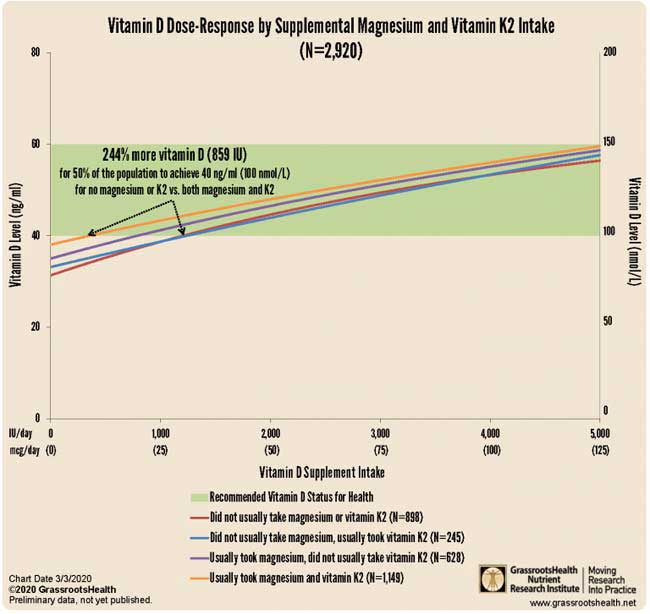Could This Common Herb Help Diabetes and Blood Pressure?
Bay leaves are popularly used in pickling, marinating and flavoring stews, soups and stuffing. They come from the bay laurel tree native to Mediterranean countries. The leaves can be up to 3 inches long and are almond-shaped. You've likely seen cooking shows or read recipes that recommended adding a bay leaf to savory soups and stews, but removing it before eating. As Serious Eats describes the bay leaf:1
“It's understandable why you may think they're optional. Bay leaf, by its very nature, plays second fiddle to other, more prominent flavors. But just as a grind of black pepper, some sautéed anchovies, or a softened leek might not be instantly recognizable in a stew, they add a layer of subtle background music for the stars of your dish to play over.”
Although the initial flavor is reminiscent of Vicks VapoRub, originating from the chemical eugenol that's the largest compound in the bay leaf, the flavor changes after simmering for an hour or two and adds a complex profile that many people enjoy in their soups and sauces.
Biting into a bay leaf is unpleasant, which is why they're left whole in the cooking and fished out before serving. You can find fresh and dried bay leaves at most grocery stores. For the most part, dried bay leaves are generally imported from the Mediterranean region and fresh bay leaves are shipped from California.2 Although they're both called bay leaves and used in nearly the same way, the plants are not directly related.
What Bay Leaf Is in Your Spice Rack?
The true bay leaf is also known as a bay laurel and is a broadleaf evergreen tree native to Western Asia, Northern Africa and southern Europe.3 The botanical name is Laurus nobilis and it can be grown as a houseplant.
However, you may have seen the leaves of other species commonly sold as bay leaves since the leaves are similar in morphology, aroma and sometimes flavor.4 These substitutes include:5
- Cinnamomum tamala (Indian bay leaf)
- Litsea glaucescens (Mexican bay leaf)
- Pimenta racemosa (West Indian bay leaf)
- Syzygium polyanthum (Indonesian bay leaf)
- Umbellularia californica (Californian bay leaf)
While they look similar, the flavor and odor after cooking are not what you would expect from L. nobilis. As the writer at Serious Eats describes, throwing a fresh bay leaf into a bechamel sauce resulted in something that “tasted like I'd tipped a bottle of cold medicine into it.”6
In a recent study, researchers compared the Laurus nobilis, commonly sold in Nigerian markets, against the leaves of Syzygium guineense (S.guineense) and Syzygium eucalyptoides (S. eucalyptoides) in search of a possible replacement for the bay laurel.7
The researchers used a commercial sample of Laurus nobilis as the gold standard and compared essential oils obtained through hydrodistillation and analyzed by gas chromatography-mass spectrometry. The largest constituents in L. nobilis were eucalyptol, alpha pinene and camphene.
There were 75 compounds in L. nobilis, 16 of which matched S. guineense essential oil, with six matching compounds in S. eucalyptoides. Syzygium guineense has historically been used in folklore medicine by people in African countries. The researchers included it to analyze the antimicrobial and antioxidant properties in the essential oil.
Syzygium eucalyptoides is native to Western Australia, where the fruit is eaten to help prevent cancer, fight asthma and lower the risk of diabetes. The leaves, bark and fruit of the Syzygium polyanthum plant have a variety of traditional uses, including to treat high blood pressure, gastritis, diarrhea and skin diseases.
Bay Leaf Extract Lowers Fasting Blood Glucose Level
Past studies of Syzygium polyanthum demonstrated the ethanol extract of the essential oil had antioxidant activities and was safe for humans. In a study presented at the 6th International Conference on Public Health in Indonesia, researchers discussed their study in which they investigated the effects of the ethanol extract on fasting blood sugar in study participants with Type 2 diabetes.8
The pilot study used a randomized control trial design with a small sample size of eight individuals. Those receiving the intervention consumed 350 milligrams (mg) of the extract in capsule form once a day for 14 days. The control group took a placebo for the same time period.
Data were collected on the day before the intervention began and after the participants had taken the supplement for 14 days. Following the intervention, the fasting blood sugar in the group receiving the supplement was lower than in the control group.
The researchers believe the statistical nonsignificant difference was related to the small sample size in a pilot study and concluded the Syzygium polyanthum ethanol extract may be an effective means of lowering blood sugar in people with Type 2 diabetes.9
The results support an earlier animal study using a methanol extract of S. polyanthum testing for hypoglycemic activity. The researchers wrote that people with diabetes in Indonesia commonly included the leaf in traditional medicine to control blood sugar.10
The researchers evaluated the possible mechanisms through which the extract exerted the antihyperglycemic activity and found it inhibited the absorption of glucose from the intestines and increased the uptake in muscle tissue. A second animal study showed rats that received S. polyanthum extract had a 65.91% lower blood glucose than those in the control group.11
Bay Leaf and Soursop Help Lower Uric Acid Levels
In a study published in Scientific Reports, the researchers sought to investigate the potential bidirectional association between gout and Type 2 diabetes.12 They used data from the Singapore Chinese Health Study, and concluded that the results suggested having an incident of gout is related to the development of diabetes in normal weight individuals — yet those with diabetes had a lower risk of gout.
A second study also found people who developed gout had an increased risk of developing diabetes.13 Gout is caused by elevated levels of uric acid in the blood that’s the result of increased production or decreased excretion.14 According to the Partnership to Fight Chronic Disease, nearly 4 million people in the U.S. have gout, which is a form of inflammatory arthritis.15
In an evaluation by the same organization, the researcher found treatment for gout exceeded $11,000 per patient each year, which is much higher than previous estimates.16 Researchers from Perintis Institute of Health Science in Indonesia sought to compare the effect of Indonesian bay leaf drink against soursop juice to reduce uric acid levels and thus impact on gout development.17
Soursop fruit is also called graviola and is a creamy textured, strongly flavored fruit some compare to pineapple or strawberries.18 The researchers did a pretest and a post-test after intervention with 17 participants who drank the bay leaf drink and 17 who consumed soursop juice.
Although both groups had lower levels of uric acid at the end of the intervention, the researchers found those who consumed the soursop juice had a statistically greater reduction. However, bay leaves have been a traditional part of Ayurveda remedies in the treatment of gout, both in tea form and as an external application.19
Supplement Lowers Blood Pressure and Promotes Angiogenesis
Indonesian bay leaf (Syzygium polyanthum) also influences your vascular system. In one study from Indonesia published in 2020, the researchers evaluated the effect that bay leaf extract could have on vascular endothelial growth.20
They used an animal model in which acute coronary syndrome was surgically induced and the animals then treated with the bay leaf extract. On evaluation, the researchers found a significant expression of vascular endothelial growth factors in the treatment group as compared to the control group.
This led them to conclude bay leaf extract could have a potential effect on angiogenesis and act as an adjuvant treatment that may lead “to better prognosis for reperfusion on ischemic tissue.”21 This has the potential to improve recovery after cardiovascular events that trigger tissue ischemia and damage.
A second recent study published in the International Journal of Innovative Science and Research Technology evaluated the effect Indonesian bay leaf may have on the systolic and diastolic blood pressure of pregnant women with high blood pressure.22
The researchers engaged 39 pregnant women and split them into 19 in the intervention group and 20 in the control group. The women in the intervention group were given 14 days of 80 mg of Indonesian bay leaf nanoparticles with 10 mg of nifedipine, while the control group received just the nifedipine.
Nifedipine is a calcium channel blocker used to treat high blood pressure and control angina,23 and is prescribed in the treatment of high blood pressure in pregnancy.24 The data showed there was a greater decrease in systolic and diastolic blood pressure in the intervention group where the medication was augmented with bay leaf nanoparticles.
Multiple Health Effects Attributed to Laurus Nobilis
Many of these studies used Syzygium polyanthum extract, but other researchers have evaluated the health benefits of true bay leaf (Laurus nobilis) and found several successful pharmacological uses. Traditionally, the leaves have been used as antidiarrheal, anti-inflammatory or antidiabetic remedies. Animal studies have also found L. nobilis contributes to:25
|
Wound healing |
Anticonvulsant activity |
Analgesic capabilities |
|
Antimutagenic processes |
Immunostimulant capabilities |
Antiviral uses |
|
Anticholinergic action |
Repellent qualities against the common mosquito |
Antibacterial uses against Staphylococcus aureus, Bacillus subtilis, and Staphylococcus intermedius |
It's important to know that when you buy bay leaves with the scientific term Laurus nobilis, you want it to be the genuine article and not some knock-off from an ornamental plant. They must be from the laurel tree, so shop for quality. While some herbs, when dried, become powdery and tasteless, bay leaves can be dried with very little change in the aromatic components.26
Bay leaves are a classic ingredient in savory sauces, and delicious on seafood, meats and numerous vegetable dishes. One FYI: Due to the presence of a high concentration of eugenol, bay leaf oil (or bay oil) may be a skin and mucus membrane irritant. If you want your bay leaves to last, store them in the freezer, which is helpful if you want to buy them in bulk.
from Articles https://ift.tt/373CT1k
via IFTTT

